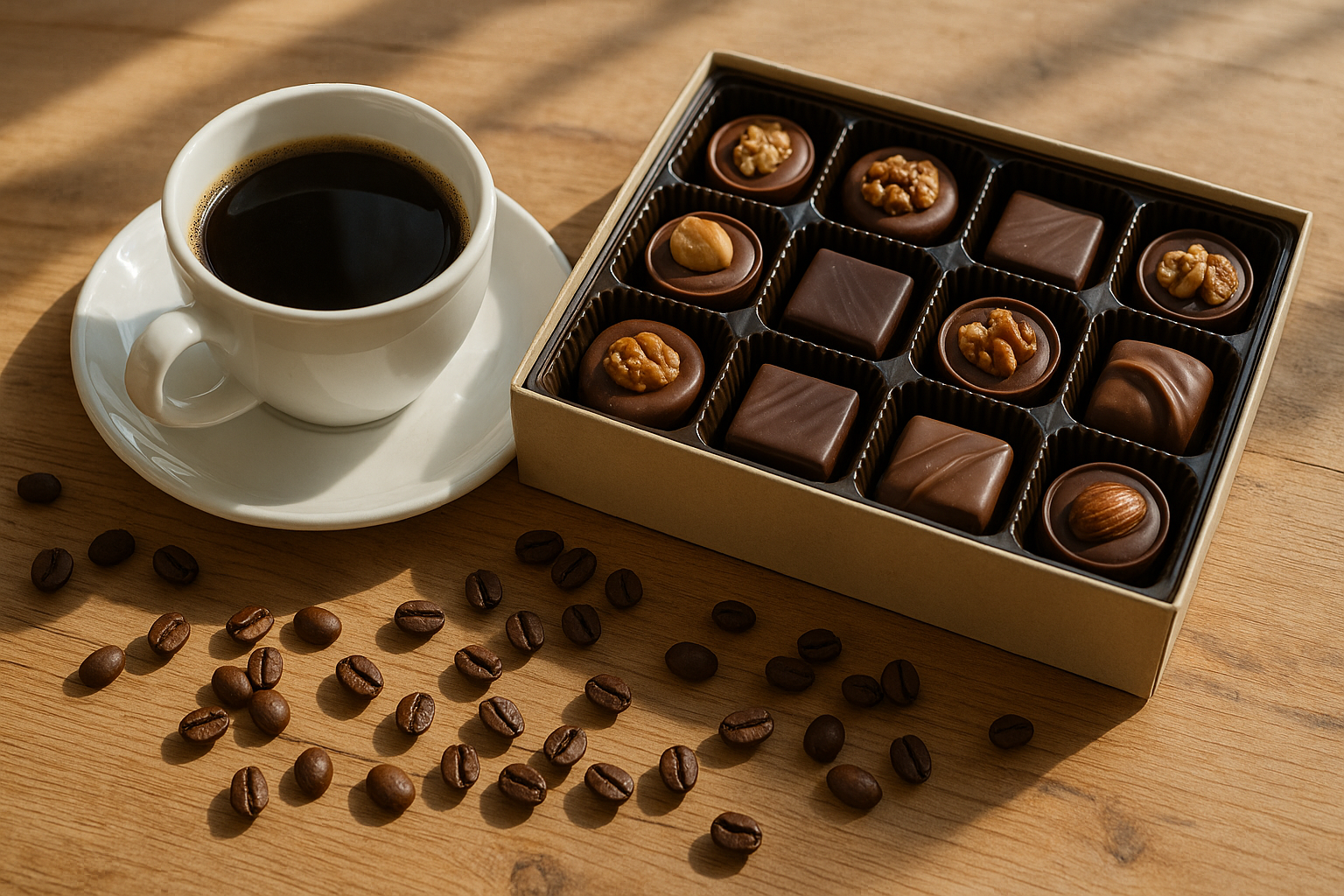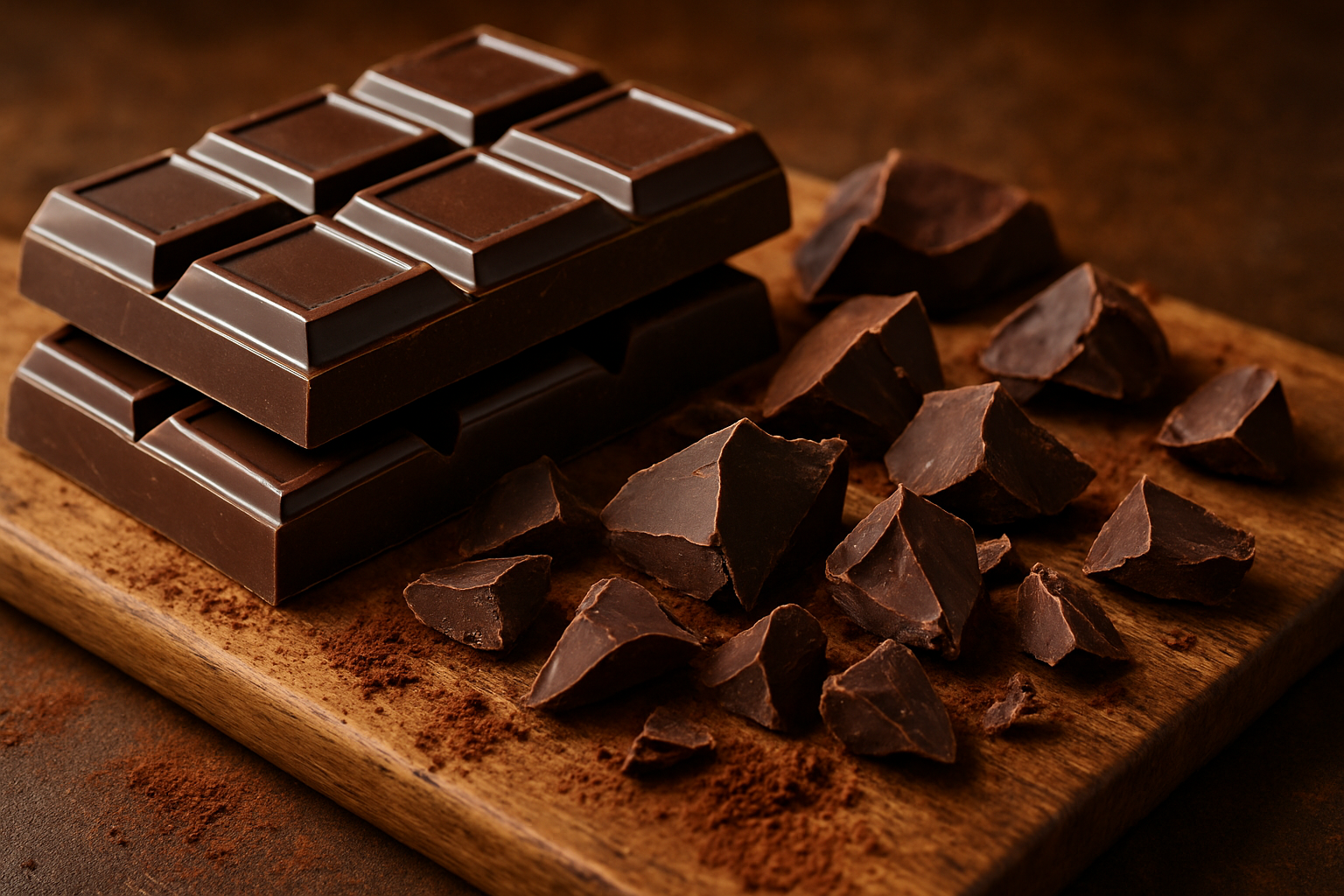Chocolate. Just the word evokes warmth, comfort, and indulgence. Which is the best chocolate for baking? For bakers, it's more than just a treat; it's a fundamental ingredient, a source of endless possibilities, and often, a subject of much debate. The sheer variety of chocolate available can be overwhelming, leading to a common question: which type of chocolate should I use, and when? Which is the best chocolate for baking? The answer, as with many things in baking, is nuanced, depending on the desired flavour, texture, and aesthetic of your final creation. The nature of the desired result throws up the usual questions. Dark versus milk for brownies, choc chips versus chunks. Which to use and when?
Understanding the different types of chocolate and their unique properties is the key to unlocking their full potential and which is the best chocolate for your baking. From the rich intensity of dark chocolate to the creamy sweetness of milk chocolate and the versatile nature of cocoa powder, each plays a distinct role.
1. Unsweetened Chocolate (Baking Chocolate / Bitter Chocolate):
This is chocolate in its purest form, containing 100% cocoa solids and cocoa butter, with no added sugar. As its name suggests, it is intensely bitter and not meant for eating on its own.
-
When to use it: Unsweetened chocolate is the backbone of deeply chocolatey desserts where you want to control the sugar content precisely. It's ideal for rich brownies, fudgy cakes, dark chocolate mousses, and certain glazes where a profound cocoa flavour is paramount without added sweetness. Because it lacks sugar, it allows the natural bitterness and complexity of the cocoa bean to shine through.
-
Key characteristic: Its high cocoa solid content provides intense chocolate flavour and a sturdy structure to baked goods.
-
Substitution note: Do not substitute with any other type of chocolate without significantly altering your recipe's sugar content and potentially its texture.
2. Dark Chocolate (Semi-Sweet / Bittersweet):
This category is broad, typically ranging from 50% to 90% cocoa solids, with the remainder being sugar and sometimes vanilla or an emulsifier like soy lecithin. The higher the cocoa percentage, the less sweet and more intense the chocolate will be. Semi-sweet chocolate usually falls in the 50-60% range, while bittersweet is generally 65% and above.
-
When to use it: Dark chocolate is incredibly versatile. Who comes out on top when it’s dark versus milk for brownies? Generally it’s dark to give the richness we all associate with brownies.
-
For robust flavour: Use higher percentages (70%+) for molten lava cakes, sophisticated chocolate tarts, or any recipe where you want the primary flavour to be deep, complex chocolate without excessive sweetness.
-
For baking and melting: Medium percentages (50-70%) are excellent for chocolate chip cookies (producing a less sweet, more refined chip), brownies, ganaches, and tempering for coating truffles or making chocolate decorations. Its balanced flavour profile makes it a reliable choice for a wide array of recipes.
-
-
Key characteristic: Its lower sugar content and higher cocoa solid percentage provide a more pronounced chocolate flavour and a less cloyingly sweet result.
-
Tips: When a recipe calls for "dark chocolate," a good all-rounder is a 60-70% cocoa solid bar. Adjust up or down based on your desired intensity and sweetness.
-
You can see from the above that the best chocolate for baking delicious brownies is dark. In brownies the definitive answer to dark versus milk for brownies is, yep, dark chocolate.
3. Milk Chocolate:
Containing approximately 10-50% cocoa solids, milk chocolate also includes milk powder or condensed milk, which gives it its characteristic creamy texture and sweeter, milder flavour.
-
When to use it: Milk chocolate is perfect for recipes where you desire a softer, sweeter chocolate note. Think classic chocolate chip cookies (for a sweeter, softer chip), chocolate puddings, candies, and glazes where a less intense, more comforting flavour is preferred. It's also fantastic for creating a milder ganache or for mixing with darker chocolates to achieve a balanced flavour profile.
-
Key characteristic: Its milk content provides a creamy texture and a sweeter, more mellow chocolate flavour.
-
Tips: Be mindful that milk chocolate is more prone to scorching when melted due to its milk solids and sugar content. Melt gently over a double boiler or in short bursts in the microwave.
4. White Chocolate:
Technically not "chocolate" in the traditional sense, as it contains no cocoa solids. It's made from cocoa butter, sugar, milk solids, and often vanilla.
-
When to use it: White chocolate offers a sweet, creamy, vanilla-like flavour and a smooth texture. It's excellent for adding richness and sweetness without the brown colour or cocoa flavour. Use it in blondies, white chocolate mousses, certain types of ganache, and for decorative purposes where its colour is an asset. It pairs beautifully with berries, citrus, and nuts.
-
Key characteristic: Rich in cocoa butter, it provides a luxurious mouthfeel and sweet, milky flavour.
-
Tips: Due to its high fat content and lack of cocoa solids, white chocolate can seize easily when melted if it comes into contact with even a tiny amount of water. Handle with extreme care.
5. Cocoa Powder:
This is pure cocoa solids with almost all the cocoa butter removed. It comes in two main types: natural (non-alkalised) and Dutch-processed (alkalised).
-
Natural Cocoa Powder: Light in colour with a strong, slightly acidic chocolate flavour. It reacts with baking soda to produce lift in baked goods.
-
When to use it: Recipes that call for baking soda, such as devil's food cake, many brownie recipes, and certain cookies, where its acidity is crucial for leavening.
-
-
Dutch-Processed Cocoa Powder: Treated with an alkali to neutralise its acidity, making it darker in colour, milder in flavour, and less bitter. It does not react with baking soda; it needs baking powder for leavening.
-
When to use it: Recipes that use baking powder, or simply when you want a darker, mellower chocolate flavour and colour, such as chocolate ice cream, hot cocoa, or darker cakes and glazes.
-
-
Key characteristic: Delivers intense cocoa flavour without adding fat. The type chosen affects colour and leavening.
-
Substitution note: While you can sometimes swap them, it's best to stick to what the recipe specifies, especially if leavening is involved.
6. Chocolate Chips/Chunks (Couverture vs. Compound):
The quality of chocolate chips can vary greatly.
-
Couverture Chocolate: High-quality chocolate (dark, milk, or white) with a higher proportion of cocoa butter, designed for melting, tempering, and a superior eating experience. It melts smoothly and sets with a good snap.
-
When to use it: Ideal for professional-level baking, tempering, making moulded chocolates, or whenever you want the best possible flavour and texture in your finished product, e.g., high-end truffles, complex desserts, or when making your own chocolate pieces.
-
-
Compound Chocolate: A more economical option where vegetable fats (like palm kernel oil) replace some or all of the cocoa butter. It's designed to melt easily and hold its shape well, but it lacks the flavour depth and melt-in-your-mouth quality of couverture.
-
When to use it: Often found in standard chocolate chips designed to hold their shape during baking. While convenient, they don't offer the same flavour complexity or smooth melt. For mass-produced cookies or when texture consistency is prioritised over gourmet flavour.
-
Chocolate chips versus chocolate chunks is a question often posed when baking cookies. Because chocolate chips keep their shape and are intended to withstand high temperatures, they are ideal if you wish to see the finished product studded with chocolate. Chocolate chunks on the other hand will melt much more smoothly resulting in rich pools of gooey chocolate within your cookies. Chocolate chunks are also usually of much higher quality than chips. So chocolate chips versus chunks really depends on what you want from the finished article. Either way they are both great in cookies.
The Golden Rule: Quality Matters
Regardless of the type, the single most important factor in baking with chocolate is quality. High-quality chocolate, with fewer additives and a richer cocoa content for its type, will always yield superior results in terms of flavour, texture, and melt. Just as a fine wine elevates a meal, a good quality chocolate elevates your baked goods from good to extraordinary. Invest in the best chocolate you can afford for your baking, and your taste buds will thank you.
From the robust depth of unsweetened chocolate in a devil's food cake to the delicate creaminess of white chocolate in a raspberry tart, understanding these distinctions empowers you to choose wisely, transforming your baking from guesswork into a delicious art form. Happy baking!







